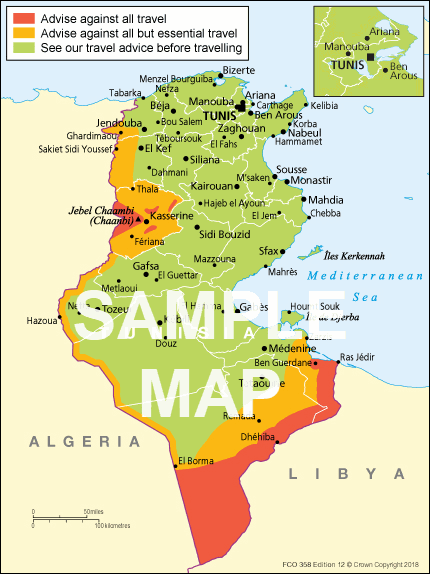
Is It Safe to Travel To…?
Is it safe to travel to <your intended destination>? It’s a common question for travelers. It’s also one that you can always find an answer to by doing a little research. And the websites listed at the end of this post are a great place to start. Note that each of these is a government-run, government-hosted site. So, you can and should make your plans based on the information you find there. Other websites might offer their own opinions, but many of these have an inherent bias. They’re run by tour operators, local hotels, or other entitities who rely on tourism for their livelihoods. As such, they’re more likely to downplay local problems or avoid mentioning any obvious dangers.
Update: October 15, 2022
With coronavirus vaccinations readily available in most developed countries, almost all travel restrictions have been eased worldwide. As of June 12, 2022, travelers no longer need to show a negative COVID-19 test result or documentation of recovery from COVID-19 before boarding a flight TO the United States. Note, however, that proof of vaccination for non-citizen nonimmigrants to travel TO the United States is still in effect. Staff here at On The Go Solo traveled to Ireland, Croatia, and Italy over this past summer and found almost no restrictions anywhere. The only exception was that flights from Germany to Italy and public transportation within Italy still required face masks to be worn at all times. No one in any of those countries ever asked for proof of vaccination or even mentioned the coronavirus, so although the pandemic hasn’t gone away completely, it’s effects are virtually nonexistent now to travelers in Europe.
For detailed and up-to-date information on any remaining rules and restrictions that might be in place in each country, U.S. citizens should refer to the State Department’s Travel Advisories page.
Update: July 7, 2020
Because of the rapidly worsening state of the coronavirus pandemic in the United States, U.S. citizens are currently banned from a number of countries. These include all 27 member countries of the European Union. Note, too, that other countries might allow you to enter, but will require you to self-quarantine for 14 days on arrival. In addition to being very boring, sitting in a hotel room for two weeks will cost you a lot of money.
Government travel advice websites
The information provided in each of the links below is provided independently by each government. However, the information found within any of the sites is usually roughly the same. If the UK government recommends avoiding North Korea, for example, it’s highly likely that everyone else does, too. Other than North Korea, I suspect.
What to look for on the site
Most of the sites listed below provide very easy to understand information about each country in the world.
Advice level, also known as a Security level
Each site will tell you what the current security level is for each country. These levels vary based on the country hosting the website. But they tend to be along the following lines, where #1 is the most severe:
- Do not travel
- Reconsider travel
- Excercise extra caution
- Excercise normal precautions
Countries with a level of one are almost always displayed with a lot of red on the page to make it clear that it’s a bad idea to go there.
Latest updates and embassy alerts
The security situation can change rapidly in any country. As a result, all of the sites provide timestamped updates of what’s going on locally. You can thus tell at a glance if anything bad has happened recently. And if so, what the official recommendations are regarding the country. The following shows the U.S. State Department’s embassy alert list for Tunisia:

Maps
For countries that contain safe and unsafe areas, a map is normally provided. On it, you can instantly see exactly where you should avoid and why. The Australian website, for example, provides the following map of Tunisia. Just a quick glance tells you which areas are to be avoided and which areas are okay but require a “high degree of caution.”

The British website provides the same basic information, but assesses the risk less severely.

There are several possible reasons for this discrepancy. British citizens might be less likely to be targeted than Australian citizens (doesn’t seem likely). Or maybe the British government uses different intelligence than the Australian government when deciding is it safe to travel to each country.
One interesting note, the U.S. State Department provides very poor maps on its website. As a result, I’d recommend checking the U.K. or Australian sites instead. If you have to go to a dangerous country, you might as well be as well informed as possible.
Website list (in alphabetical order)
So to find out is it safe to travel to wherever you’re thinking of going, check out the following sites.
Australian Department of Foreign Affairs and Trade
https://smartraveller.gov.au/countries/Pages/default.aspx
Canadian government website
https://travel.gc.ca/travelling/advisories
Ireland Department of Foreign Affairs and Trade
https://www.dfa.ie/travel/travel-advice/
New Zealand government website
Malta Ministry of Foreign Affairs and Trade Promotion
https://foreignaffairs.gov.mt/en/Pages/Travel-Advice.aspx
Republic of South Africa Department of International Relations and Cooperation
http://www.dirco.gov.za/consular/current_issues.html
United Kingdom government website
https://www.gov.uk/foreign-travel-advice
United States Department of State
https://travel.state.gov/content/travel/en/traveladvisories/traveladvisories.html/